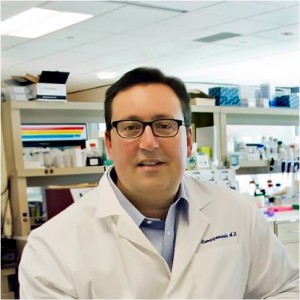Photo: washington.edu
A team of researchers in the U.S., headed by associate professor of genome sciences at the Medical Faculty of the University of Washington in Seattle John Stamatoyannopoulos, who is an American of Greek descent, has discovered a second genetic code within DNA molecules.
The newly discovered code contains additional information, which changes how experts "read" the genetic instructions and interpret their changes that affect human health. In this sense, the discovery can contribute towards the diagnosis and treatment of many diseases.
Since its first decoding in the 1960s biologists have assumed that the main function of the genetic code is the synthesis of proteins. The group led by Stamatoyannopoulos has however discovered that the genome uses the genetic code to "write" two different "languages" of biological programming.
One of them describes and directs the proteins whereas the other instructs the cells on how genes are controlled. One "language" is "written" on top of the other, which is why the second language remained hidden for many years.
 "For over 40 years we have assumed that DNA changes affecting the genetic code solely impact how proteins are made. Now we know that this basic assumption about reading the human genome missed half of the picture. The new findings highlight that DNA is an incredibly powerful information storage device, which nature has fully exploited in unexpected ways," states the genome scientist.
"For over 40 years we have assumed that DNA changes affecting the genetic code solely impact how proteins are made. Now we know that this basic assumption about reading the human genome missed half of the picture. The new findings highlight that DNA is an incredibly powerful information storage device, which nature has fully exploited in unexpected ways," states the genome scientist.
The standard genetic code is composed of 64 trinucleotide units, called codons. Stamatoyannopoulos’ team has discovered that some codons can have two meanings, one connected with protein sequence and one with gene control.
It seems that these two codes have developed in relation to each other over time. In this way, the instructions, which are associated with the gene control (or the second code), help stabilize certain features of properties that are also useful to the body.
The discovery can be of great significance for medicine and pharmaceutics. "The fact that the genetic code can simultaneously write two kinds of information means that many DNA changes that appear to alter protein sequences may actually cause disease by disrupting gene control programs," states Stamatoyannopoulos.
He studied biology at Stanford University and medicine at the University of Washington and specialized in the Medical Faculty of Harvard University and the General Hospital in Boston, Massachusetts.